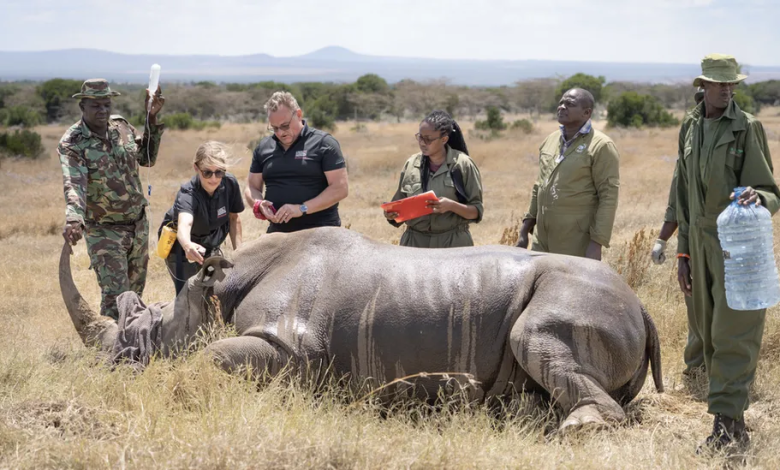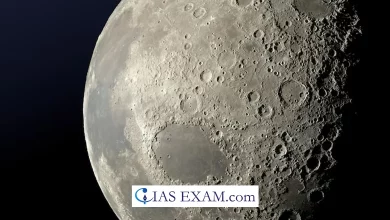World’s first in-vitro fertilization (IVF) Rhino Pregnancy
Syllabus- Science & Technology (GS Paper-3)

Context- Scientists have recently achieved the world’s first in-vitro fertilization (IVF) rhino pregnancy which has given hope for saving the critically endangered northern white rhino subspecies from extinction.
What is In-vitro fertilization (IVF)?
- In vitro fertilization (IVF) is an assisted reproductive technology (ART) that accommodates a major technique for resolving infertility problems.
- It involves combining an egg and sperm outside the body to create an embryo, which is then transferred again into the female’s uterus for implantation and pregnancy.
- Benefits in Livestocks:
- IVF in livestock offers several advantages, mainly in the multiplication of superior germplasm, which refers to the genetic material of animals that exhibit desirable traits together with high milk production, disease resistance, or other economically important characteristics.
White Rhinoceros
- Scientific Name: Ceratotherium simum
- Also known as the square-lipped rhinoceros, white rhinos have a rectangular top lip with almost no hair.
- Subspecies: The white rhinoceros consists of genetically distinct subspecies, northern and southern, determined in two exceptional areas in Africa.
- Northern white rhinos – Despite their name, they are actually grey in colour.
- Once roamed freely in many countries in east and central Africa, their numbers fell sharply due to poaching for their horns.
- The last male northern white rhino ‘Sudan’ died in 2018 with only 2 female members remaining, neither are able to carry a calf to term.
- Southern white rhinos – They are more abundant than northern sub species, roughly 20,000 remain in Africa.
- Northern white rhinos – Despite their name, they are actually grey in colour.
- IUCN status:
-
- Northern White Rhino: Critically Endangered
- Southern White Rhino: Near Threatened
- Decline:
- Despite their name, white rhinos are certainly gray, used to roam freely in several nations in east and relevant Africa, however their numbers fell sharply because of significant poaching for their horns.
- The Indian rhinoceros is different from its African rhinos with respect to possessing only one horn and is vulnerable in the IUCN Red list.
- World Rhino Day is celebrated each year on 22 September.
Why Rhinos Matter
- In almost all rhino conservation areas, there are other valuable plants and animals. The protection of rhinos helps protect other species.
- Rhinos contribute to economic growth and sustainable development through the tourism industry, which creates job opportunities and provides tangible benefits to local communities living alongside rhinos.
Challenges and concerns
- IVF is a complicated and high priced scientific procedure.
- Multiple cycles may be required for success.
- Ethical concerns exist regarding embryo choice and disposal.
Source: The Hindu
Practice question:
- Which of the following statements is true regarding in vitro and in vivo fertilization?
A) In vitro fertilization involves fertilization outside the body, while in vivo fertilization occurs inside the female reproductive system.
B) In vivo fertilization is a laboratory-based technique, whereas in vitro fertilization is a natural process that takes place in the body.
C) In vitro fertilization and in vivo fertilization are terms used interchangeably, both referring to the same reproductive process.
D) In vitro fertilization is a form of artificial insemination, while in vivo fertilization relies on external assistance to achieve fertilization.





.png)



